The CHOSN Warrior Courses
We offer three year-long courses to be taken in order: BASIC, INTERMEDIATE, and ADVANCED.
BASIC is the first of the three year-long courses. The course costs vary, and can be covered by scholarships or fees, depending on the situation. However, the cost has usually been about $300 per person for the BASIC year-long course, assuming trainers are all volunteers.
Men’s BASIC is only for small groups of men who are 18 years or older. It can be completed in three campouts of two nights each during the three Phases, or seasons, of Spring (2 nights), Fall (2 nights), and Winter (2 nights). Each campout focuses on skills appropriate to that season. Summer is left out of our training cycle to allow for families to do things which might include some camping and practicing the skills from Spring training.
Spring BASIC campouts introduce the fundamentals of camping and cooking over wood fire, in various and unpredictable weather conditions. Actually, all three seasons teach those “life outdoors” essentials regardless of the special emphasis of the season at hand. The year-long course can be started in Fall or even Winter, but Spring works best to start new groups.
Those who follow any TV shows about survival in remote areas will recall that getting food enough to keep a person going for weeks or months is the main limiting factor to “making it,” usually. And we realize that most Americans today have almost zero knowledge of the processing of food. So, each seasonal phase of our courses revolves around the best ways to obtain food: what to target, how to get it, how to dispatch it if it’s alive, and especially how to clean it to get the most out of wild game and fish when you have to cook over coals. Being slightly hungry during the process is helpful, too. But if fishing is bad during Spring BASIC, for example, we have grocery store food too, so everyone eats well anyway because we are just teaching about living off the land in BASIC. Later course levels have more pressure to apply this knowledge and really do it.
So, in Spring BASIC we emphasize getting food by fishing, and we show how to deal with a fresh fish so as to get a good meal.
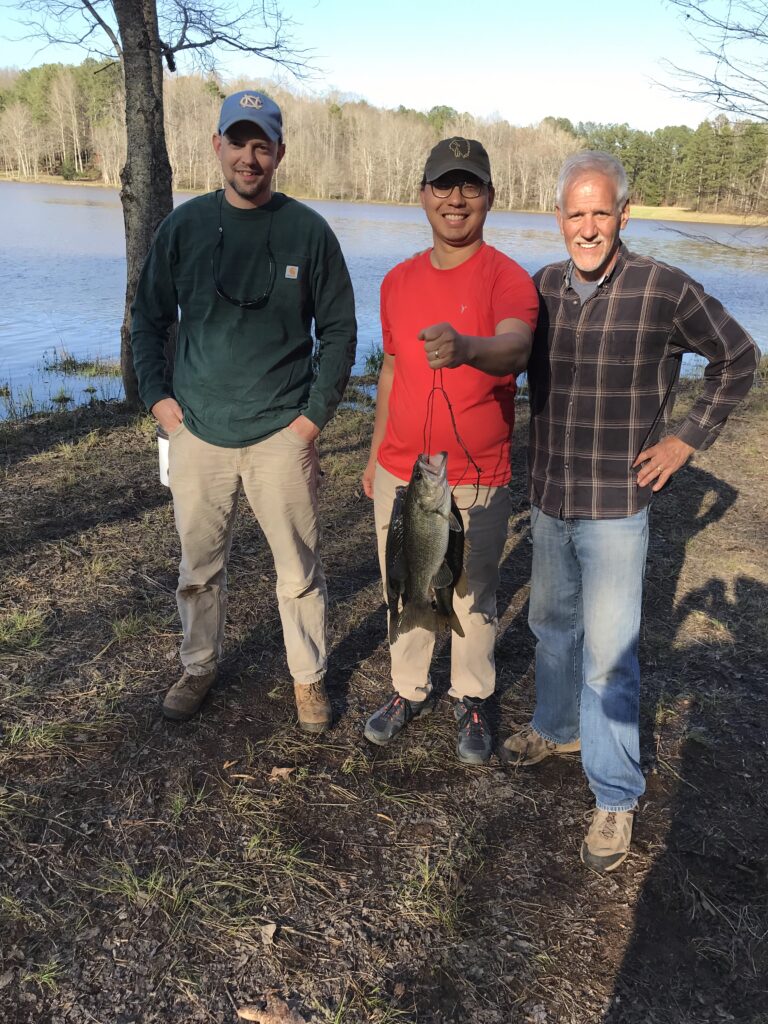
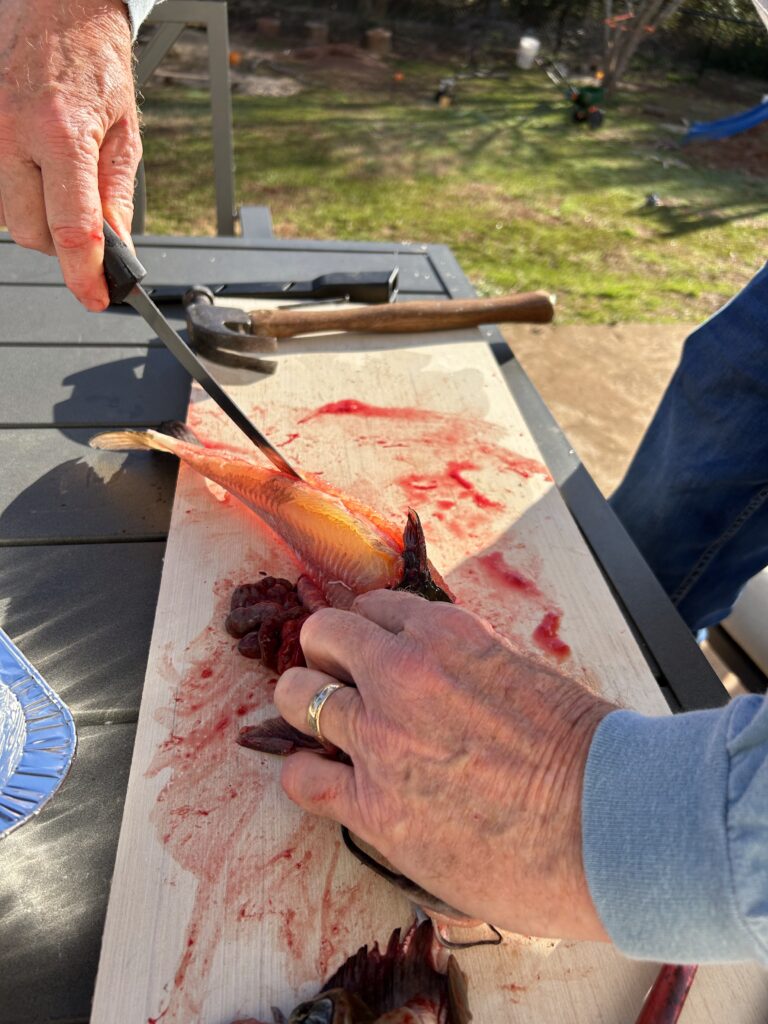
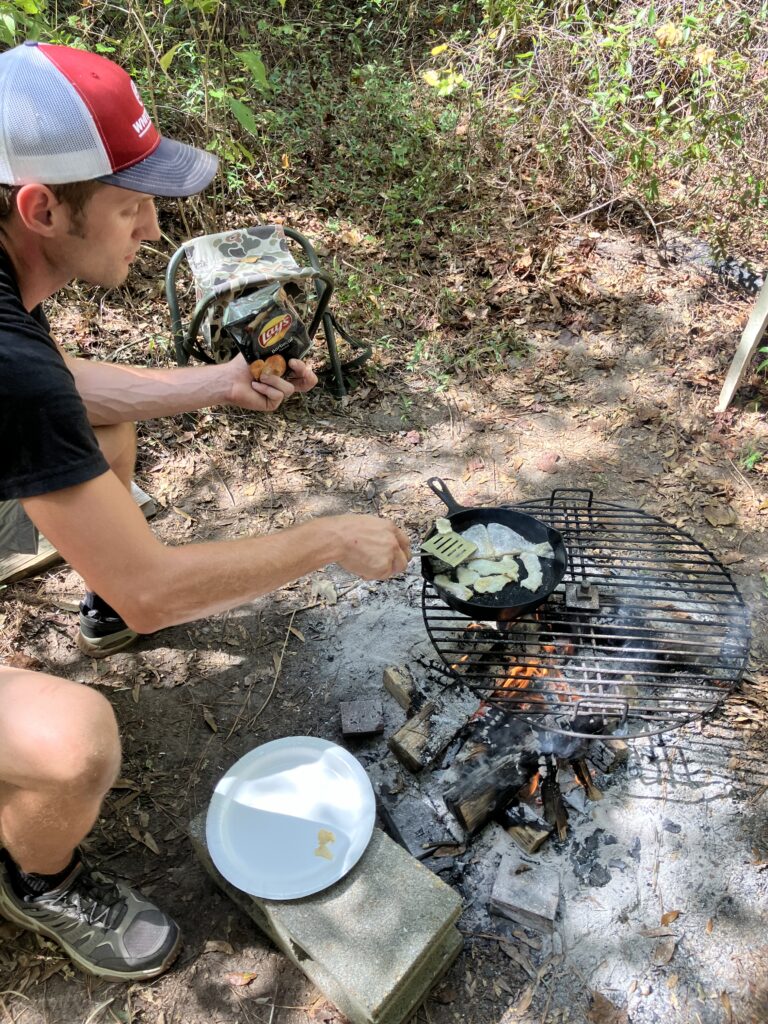
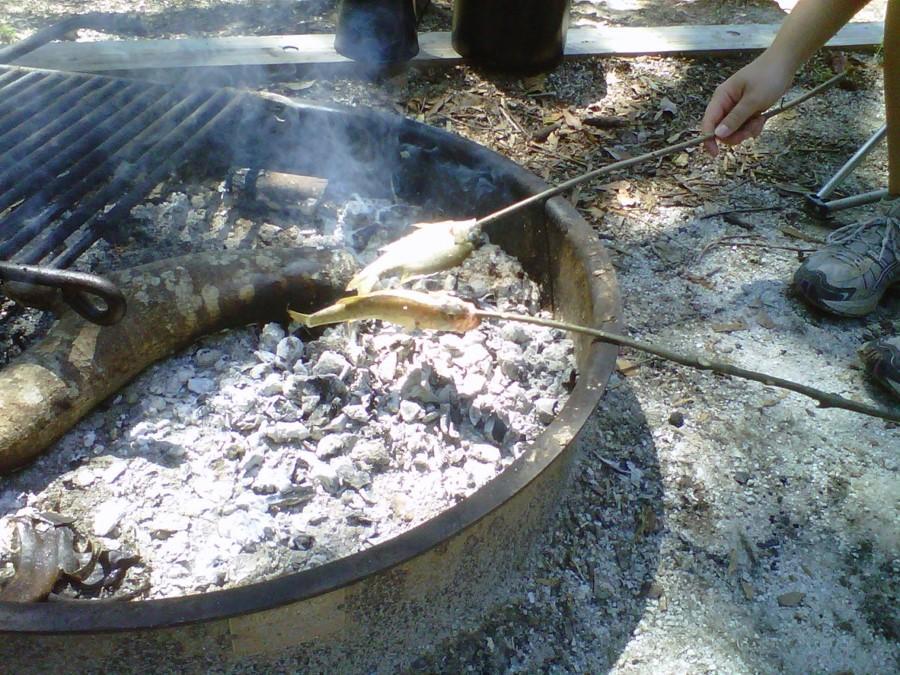
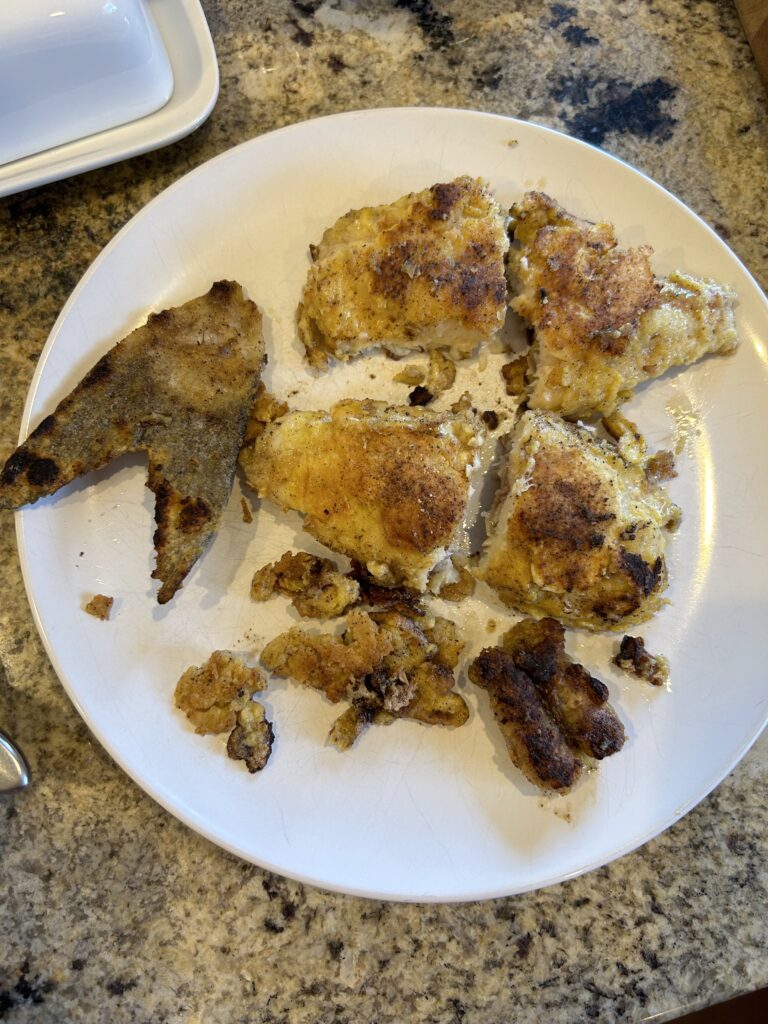
In Fall BASIC, the focus is on getting birds and how to clean them for cooking.
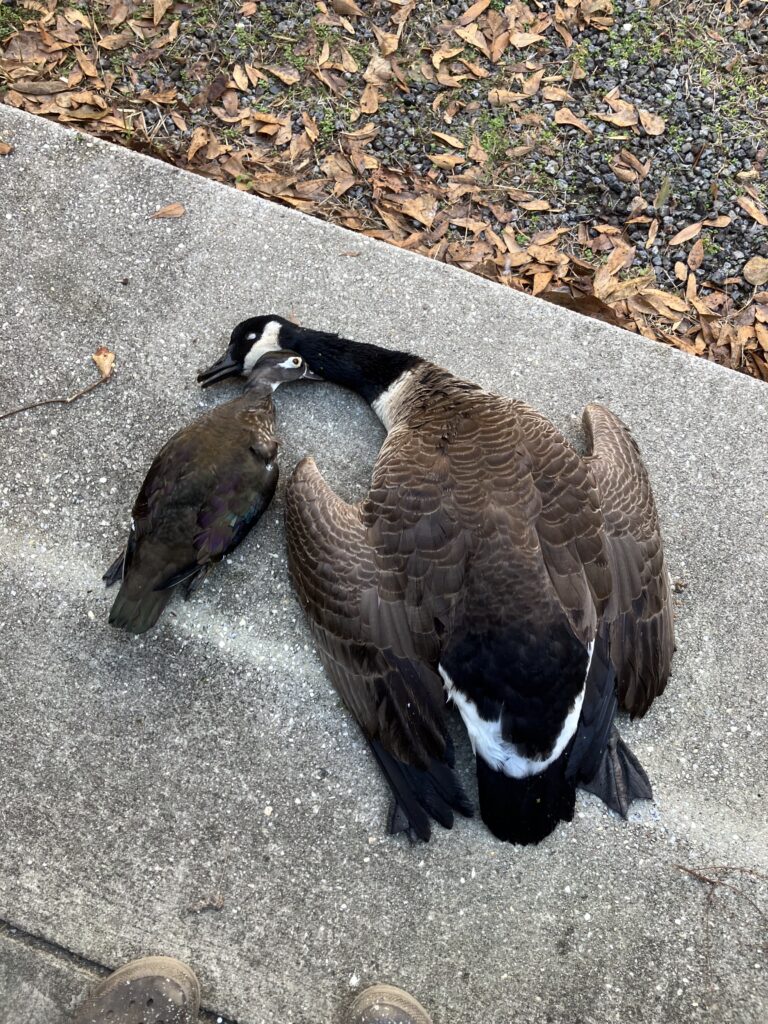
Then in the colder Winter BASIC, the job is to get furbearing and game animals, introducing a set of skills for putting both the hides and the meat to good use. A little saying of ours from traditional Indian philosophy goes, “eat the meat, and save the hide.” (ETM-STH).
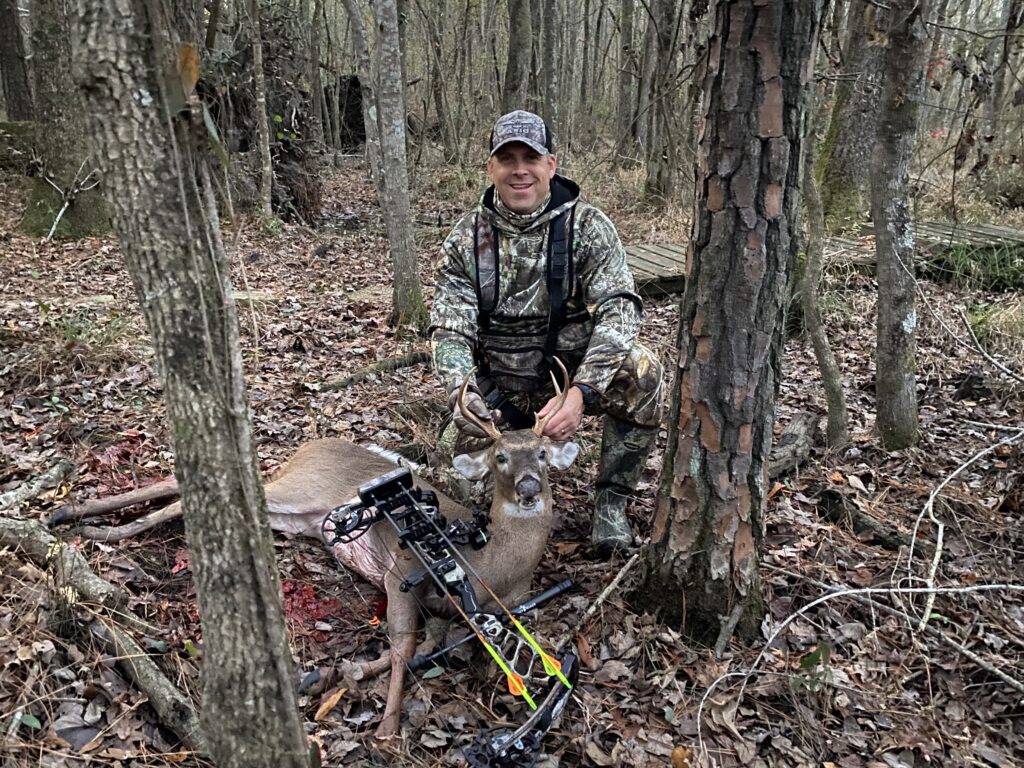
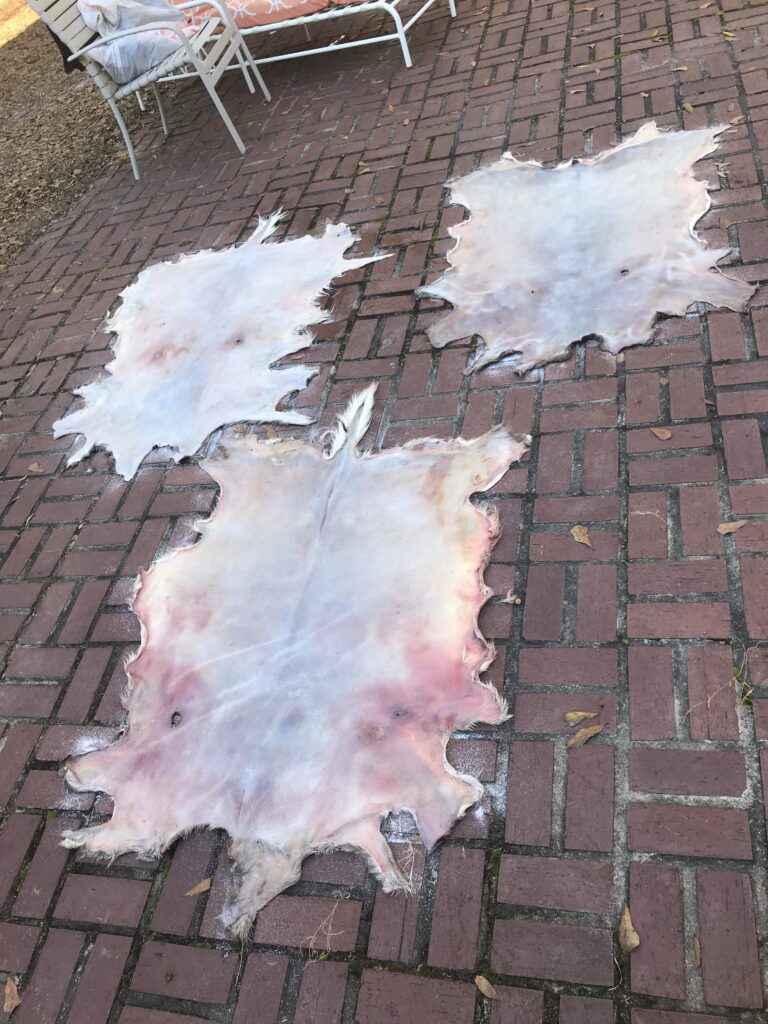
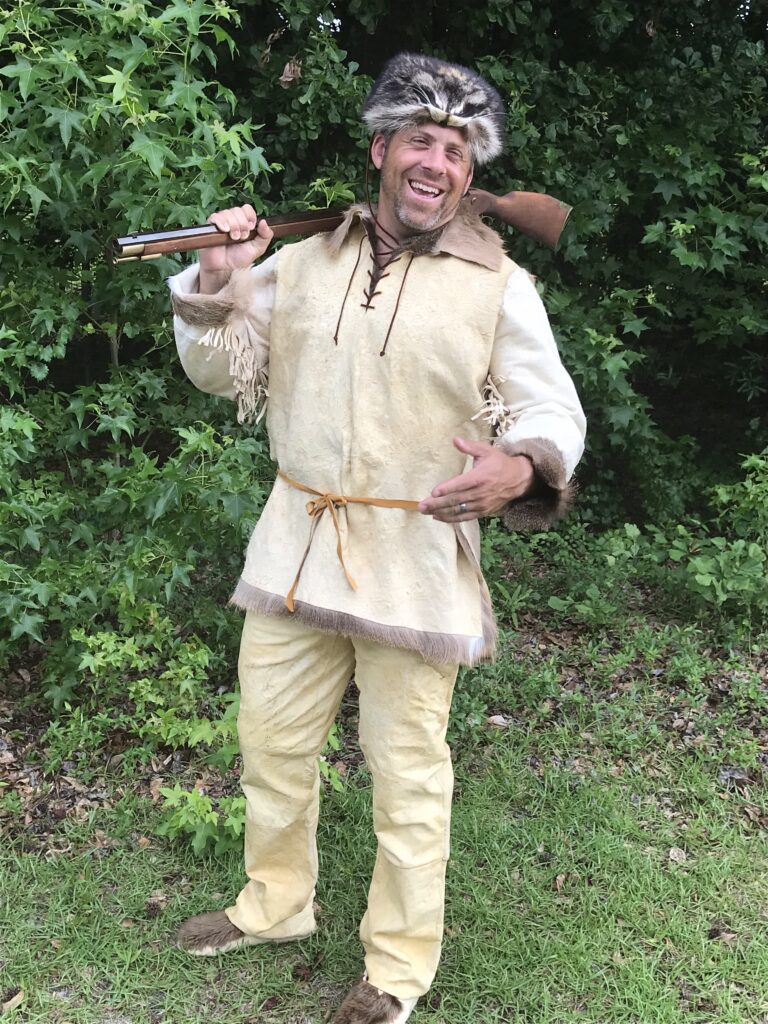
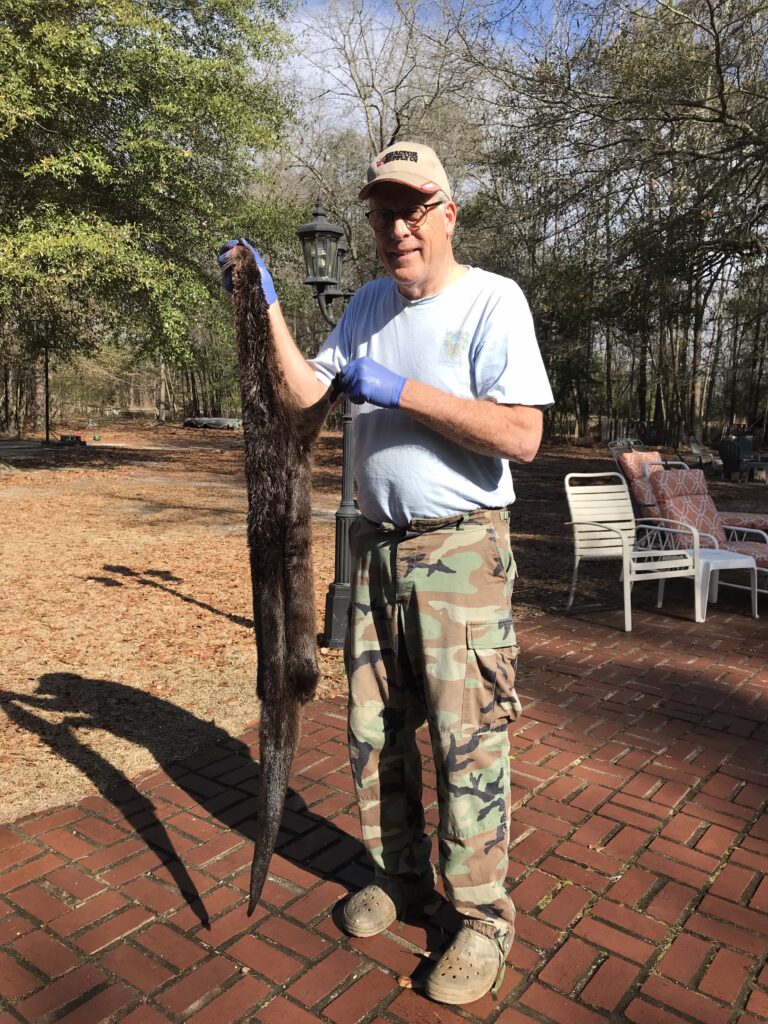
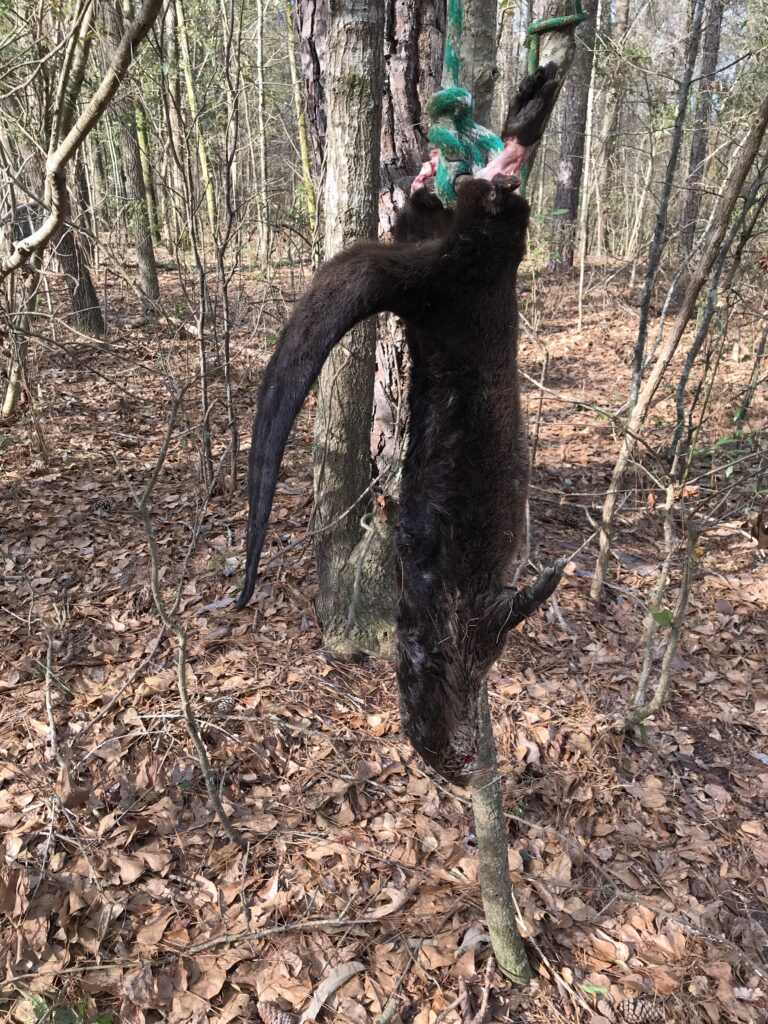
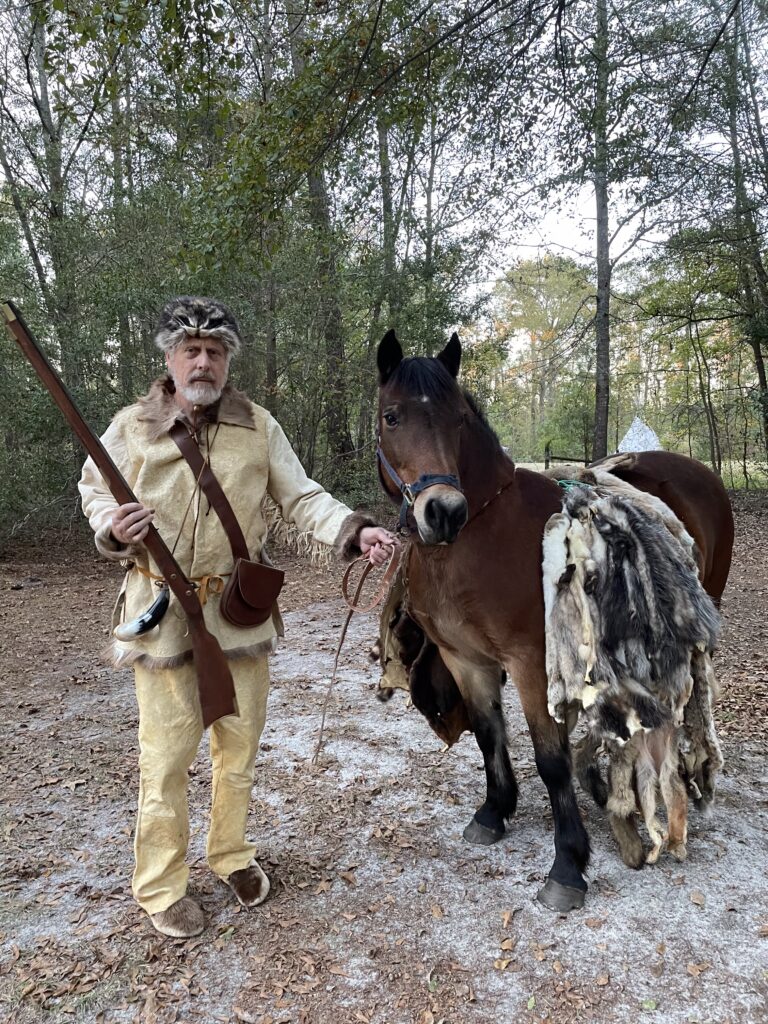
Later course levels beyond BASIC will still focus on fish, birds, and animals in Spring, Fall and Winter, but with more involvement by students, and less demonstration by instructors. In other words, instructors mainly demonstrate things like cleaning a fish in BASIC. The same skill will be revisited in INTERMEDIATE, but the students will all try doing it themselves and the instructors help them. In the ADVANCED level, the students demonstrate mostly, with instructors primarily only observing and critiquing.
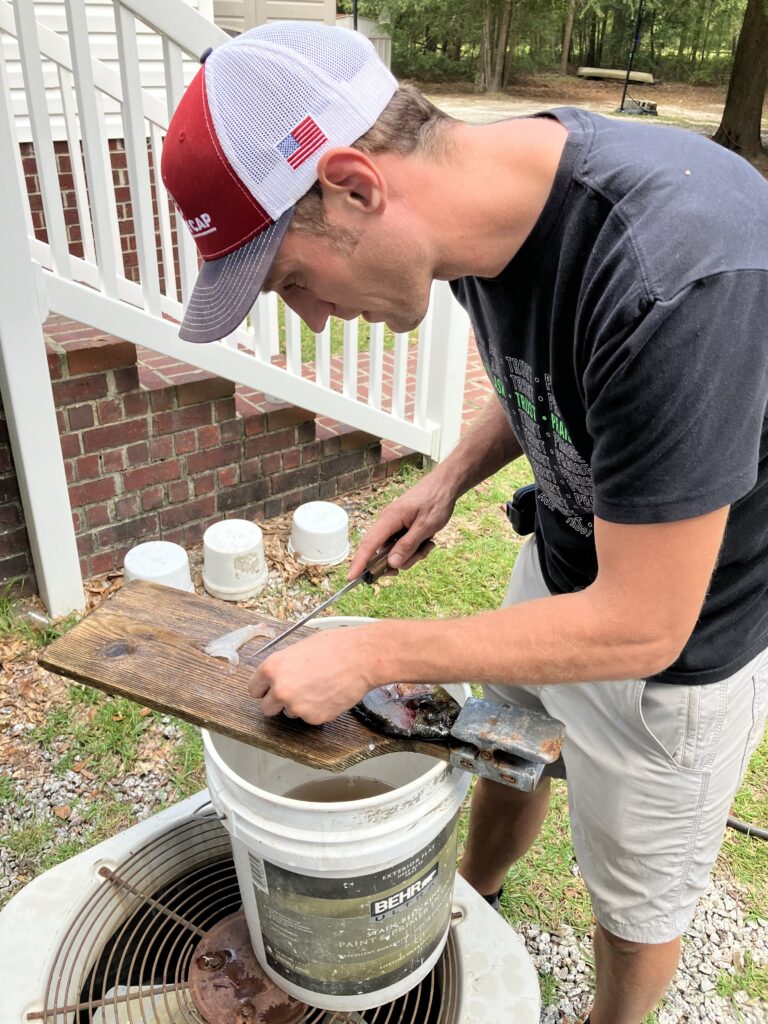
We usually ask Instructors to complete BASIC and INTERMEDIATE themselves before they would try to teach the skills for BASIC, due to that extra personal experience they get during INTERMEDIATE.
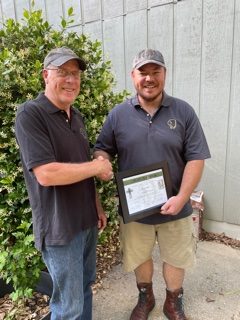
So far, we have been telling of CHOSN Warrior physical survival skills primarily. But the more significant element to the CW training involves connecting these natural truths and realities to the parallel spiritual realities only revealed in Scripture. In CHOSN Warriors, we talk much about spiritual life and the world view revealed first in Genesis. We talk about differences between things like men and animals as God designed them, etc. For this, we find that, at every campout, there are very easy opportunities around campfires, or elsewhere, to discuss the basics of the Gospel, etc.
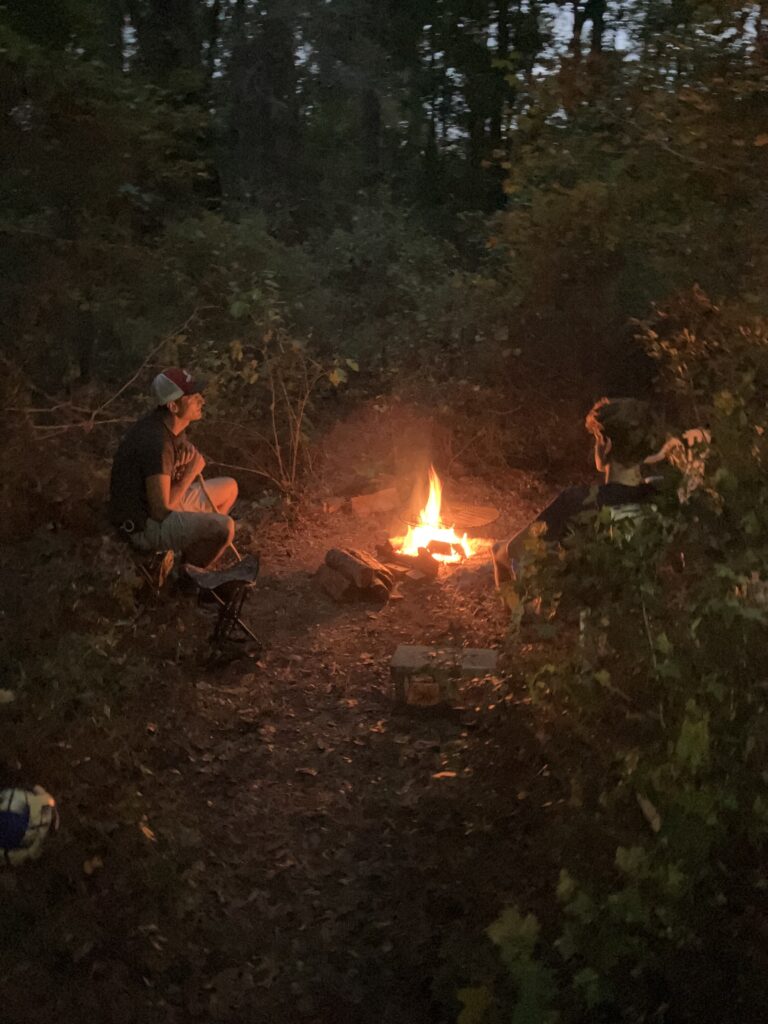
We discuss the connection between what we learned about taking a life of an animal, for example, and the need for God Himself to start that animal-killing process after Mankind sinned (Genesis 3:21). We touch on passages from Genesis to Revelation in the course of a year.
Survival physically outdoors along with wrestling with heavy thoughts about life and death is not always supposed to feel “nice.” But it needs to be dealt with. Real men and boys usually like to get close to nature and meditate for example on how “the life is in the blood” (Gen.9:4, Lev.17:11), and get prepared to encounter other spiritual truths that spring from that truth.
Often on the first night camping, a couple of men might share about their life and faith journey. Other times, we crack open the Bible and have a devotional discussion or teaching time before the next adventure/skill of the day, or soon after such a session, or before bedtime.
Of late, “Christian Education” has so sanitized the study of God’s Word and made its truth so “indoors and comfortable” that “wrestling” with matters of death and blood directly are not typically part of church work. Yet, they are important things for men to at least discuss together, if not actually experience, up close.
We often point out in our BASIC course, “For me to live, something has to die.” It proves to be a concept that “sticks with you” after you just killed a chicken, for example. Apparently, God has found realities like that very useful in leading humans since ancient times to connect with His long-term and gradually revealed Plan of Salvation, so they can more readily “get it” when the time is right. This method helped me.
A CHOSN campout requires two men as an instructor team who can share the two duties of teaching outdoor skills and leading Bible discussions. Usually, one guy feels more adequate at doing one part over the other, which works well. Ideally though, each man eventually learns to lead either element, the outdoor skill part as well as the spiritual discussion part. Splitting duties, though, between the outdoor guy and the Bible guy can be good “man sharpening man” time until both men feel competent in both elements.
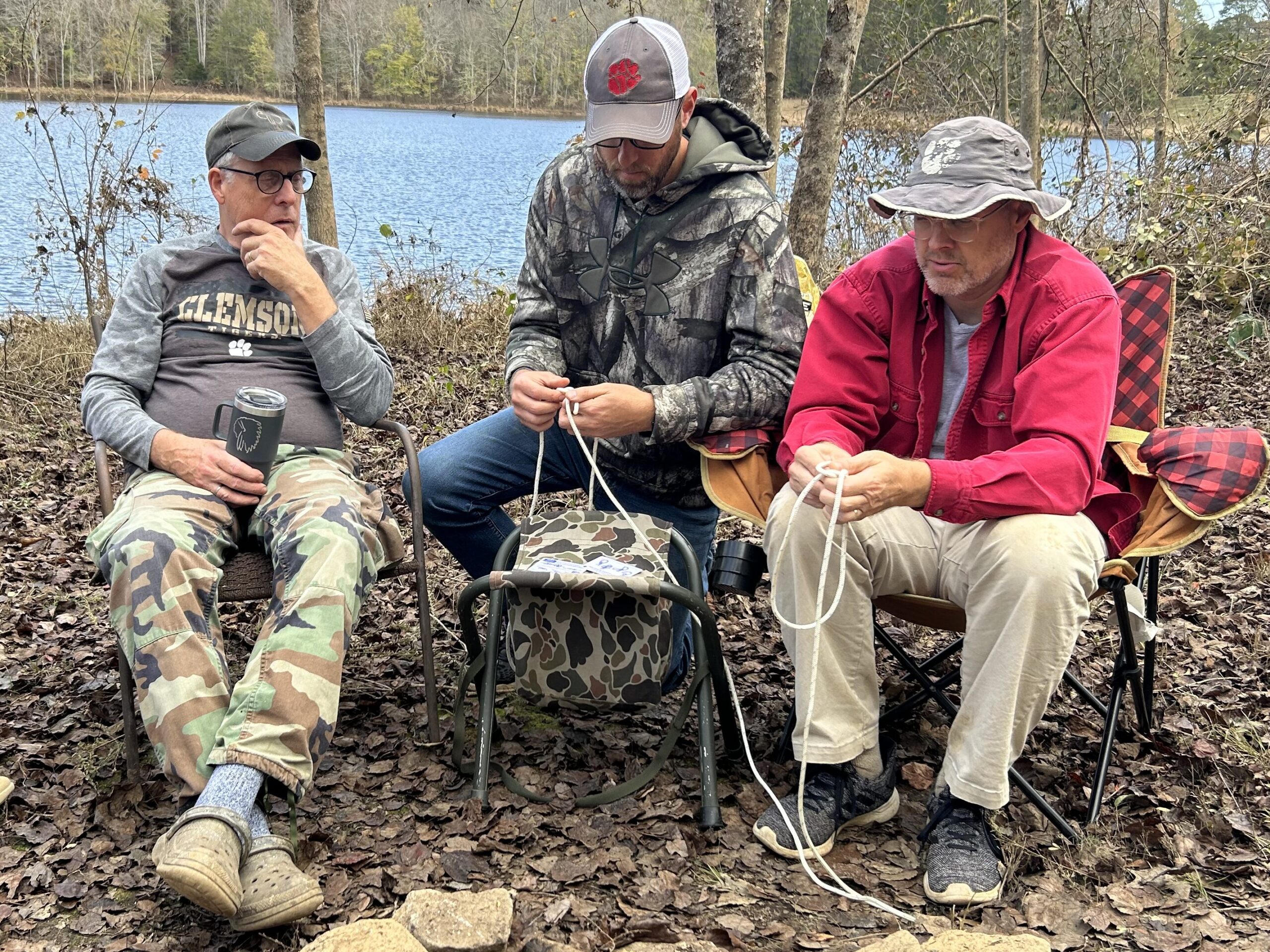
Boys’ BASIC follows the same subjects as the Men’s course, but with adjustment for maturity levels and attention spans. Also, the Boys’ course usually does two one-night campouts each season, rather than one two-night camp. It still equates to six nights total and about 150 hours with the trainers. This one-night camping schedule for boys involves more trips afield, but often it is easier on the instructors and the boys, plus it requires 3 more times practicing setting-up and taking-down of camps, which the boys especially need.
The boys’ groups are limited to just a few boys from ages 10 -17 who are led by two screened and qualified men, ideally their own dads, and this group should start and finish the course together. Exceptions are possible, depending on situations. We do a presentation of an official certificate and CW logo cap upon a participant’s completion of the three seasonal phases of BASIC level. Similar recognition follows graduation at both of the higher levels.
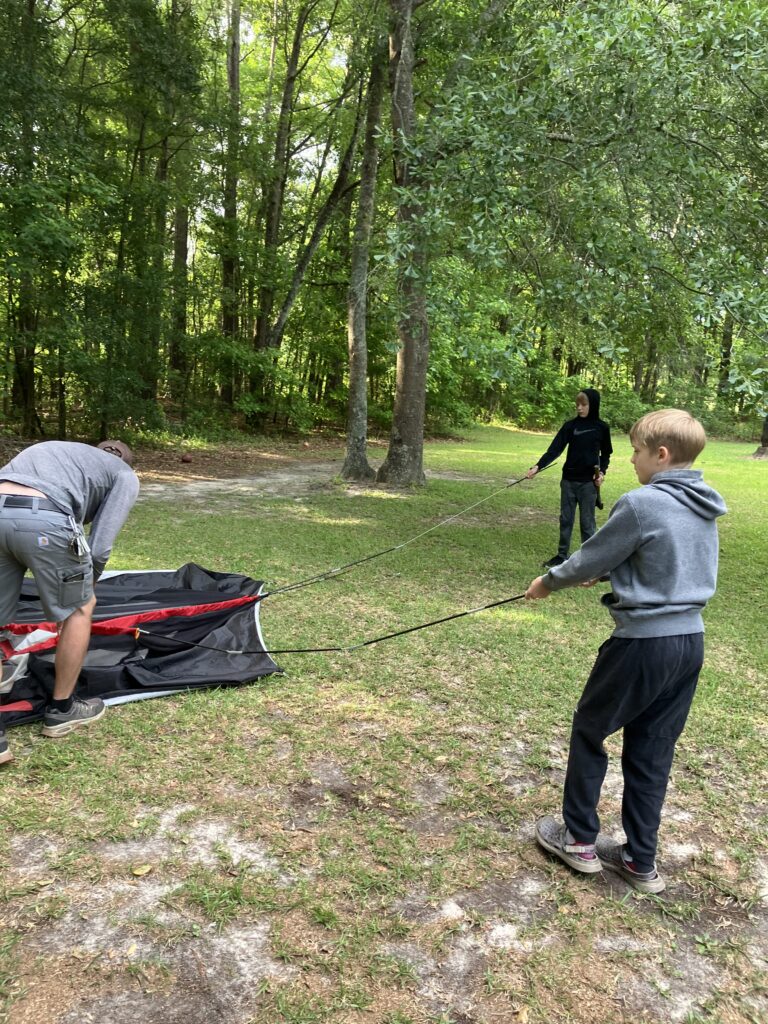
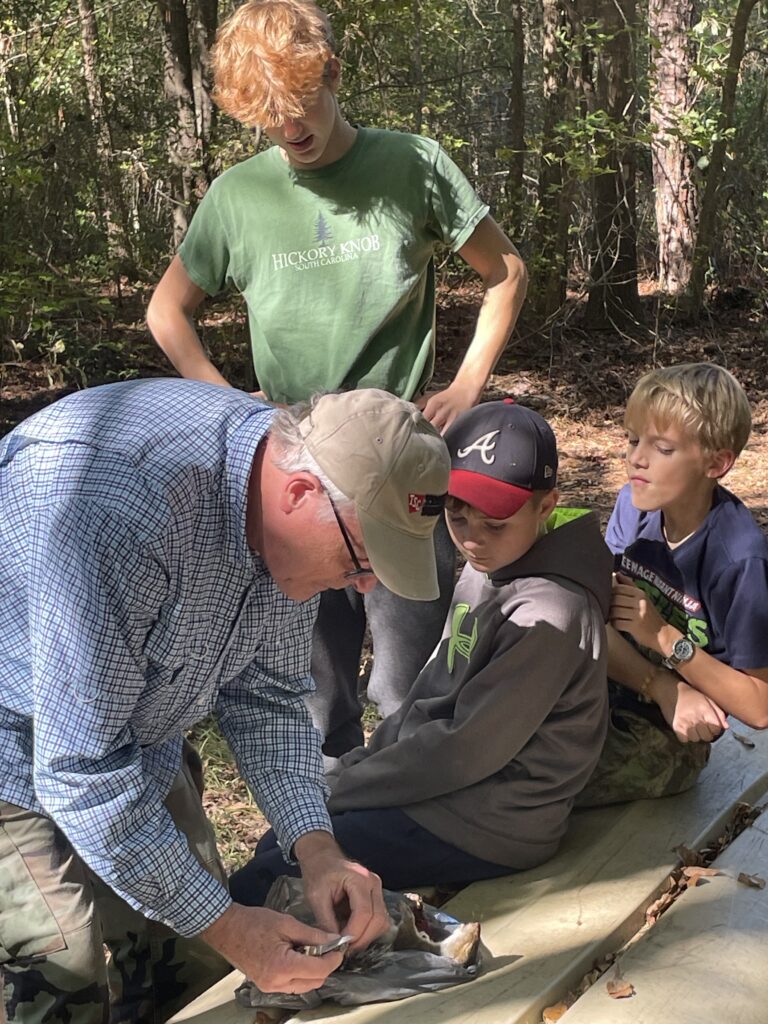
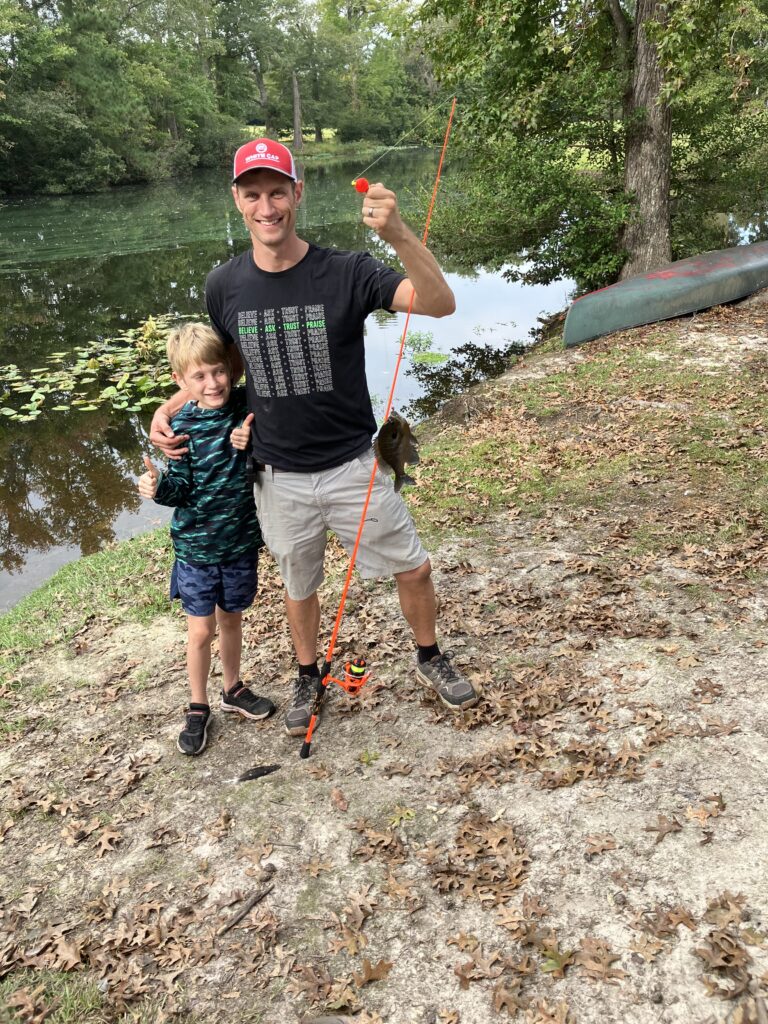
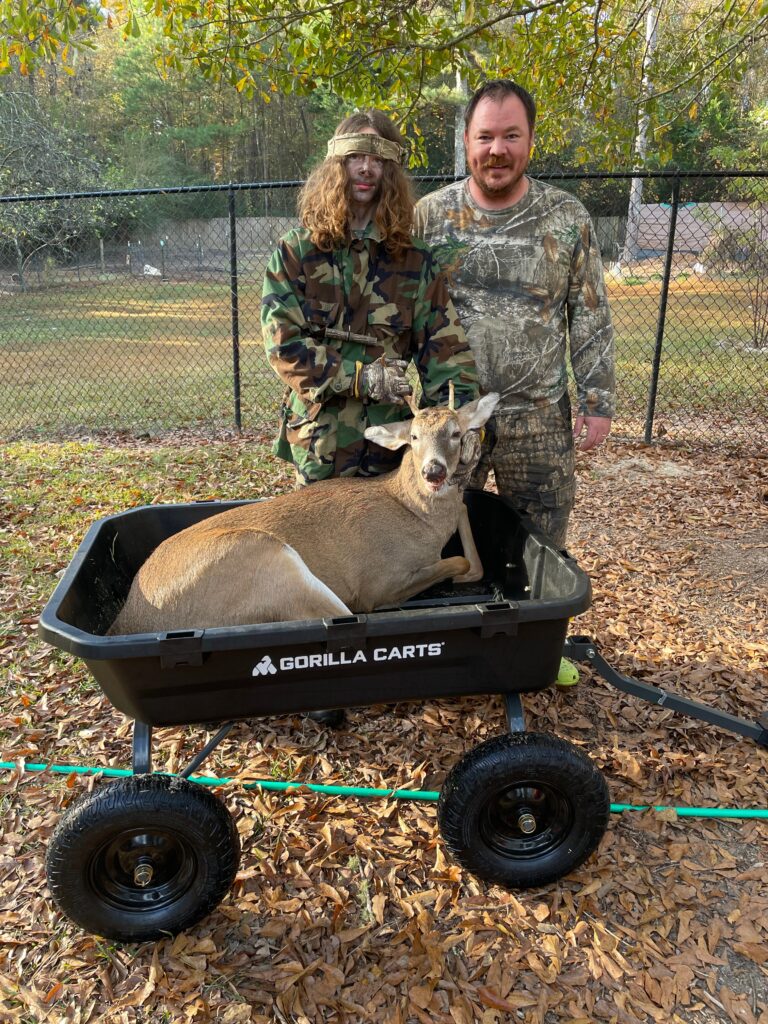
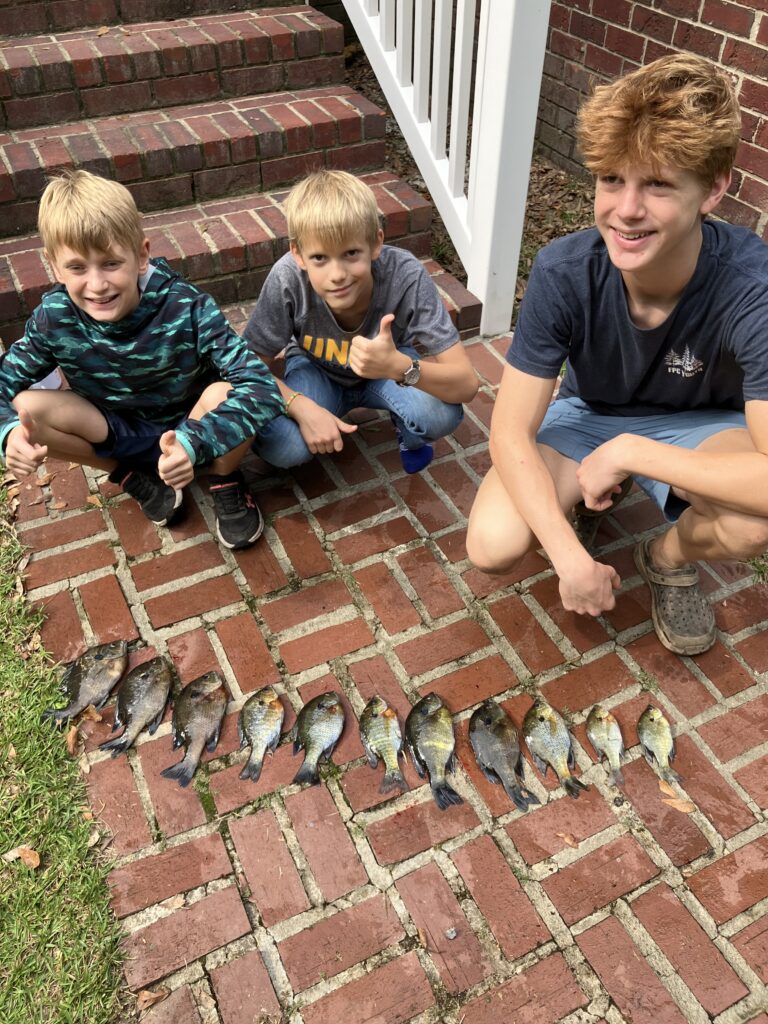
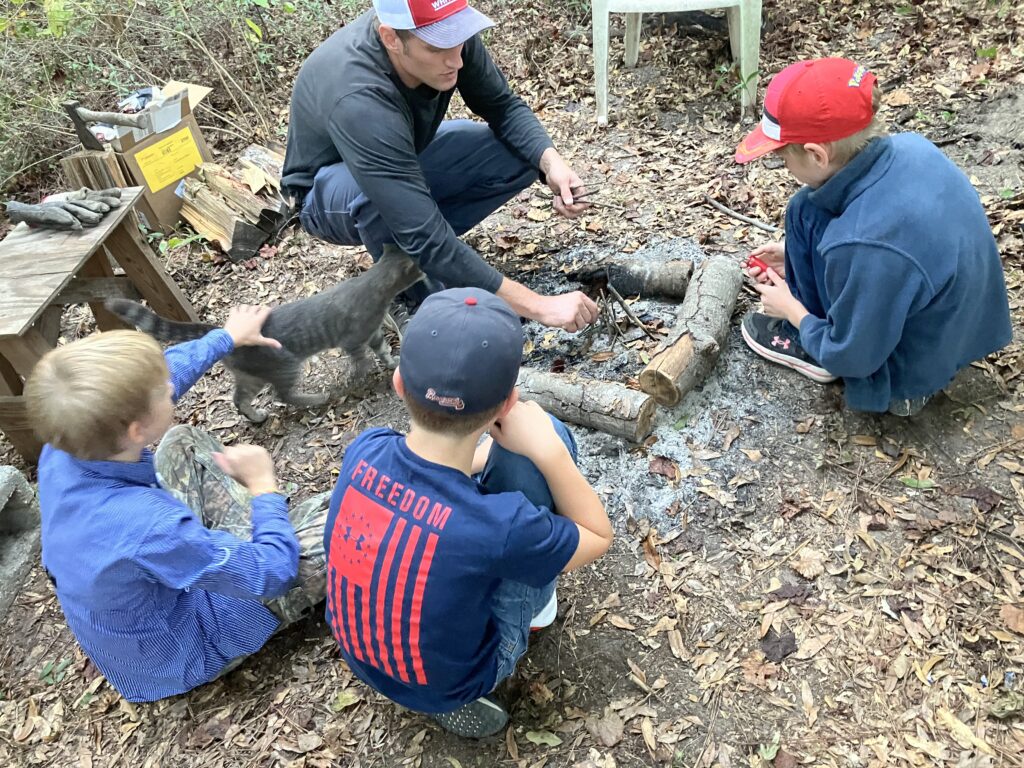
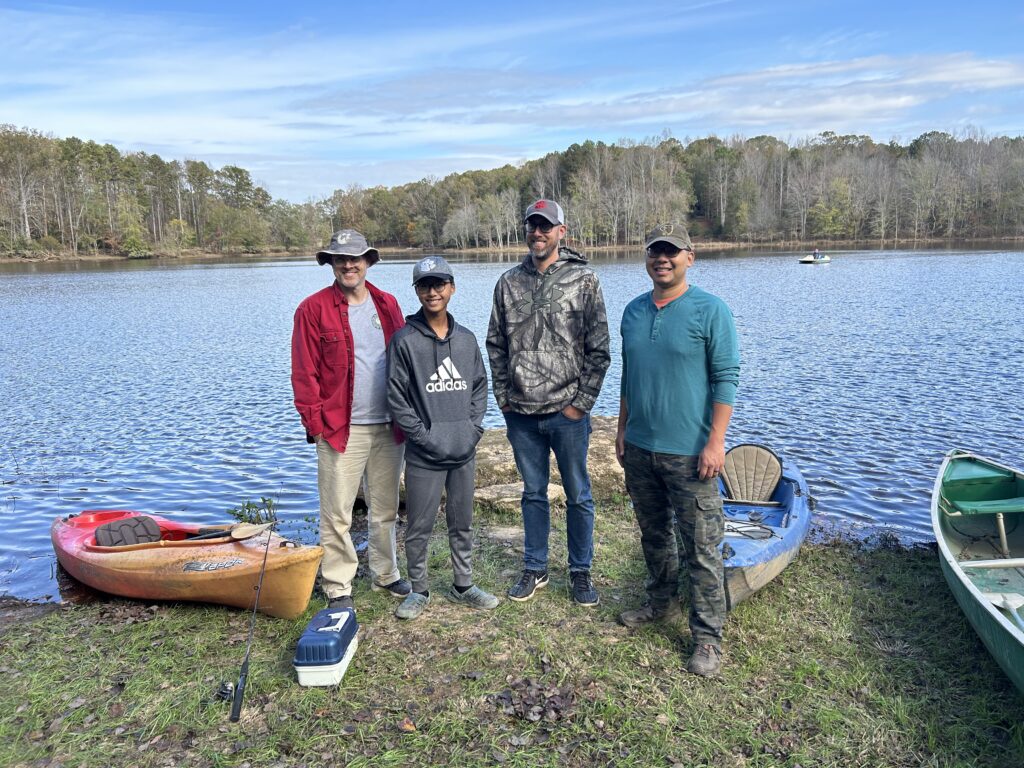
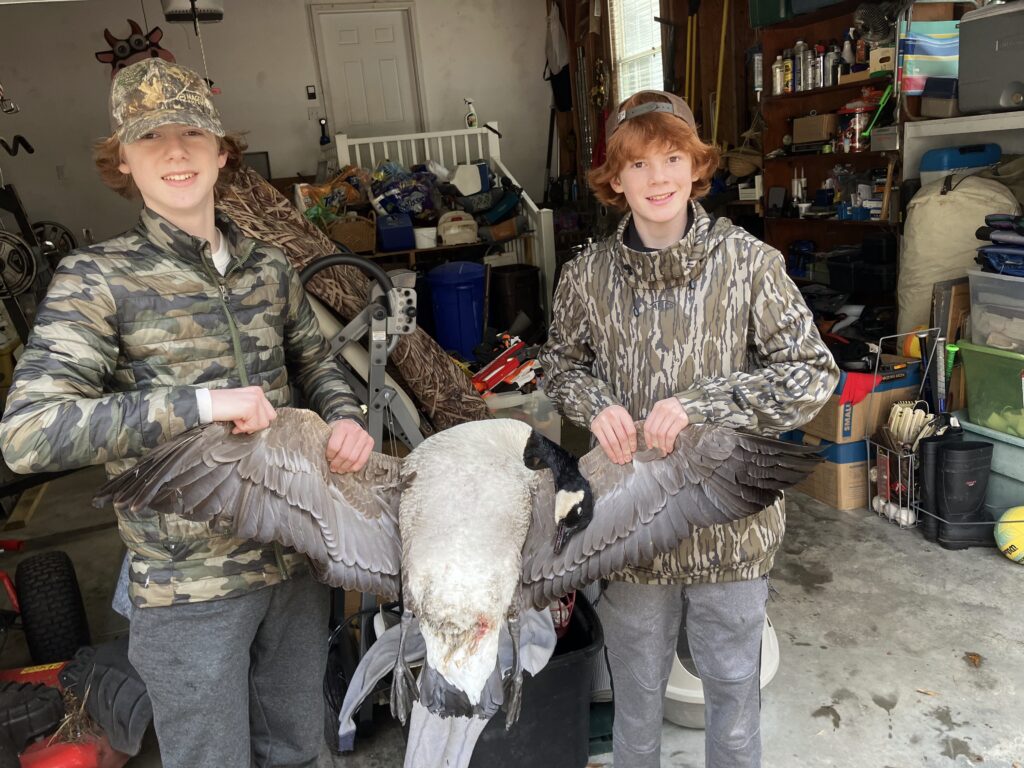
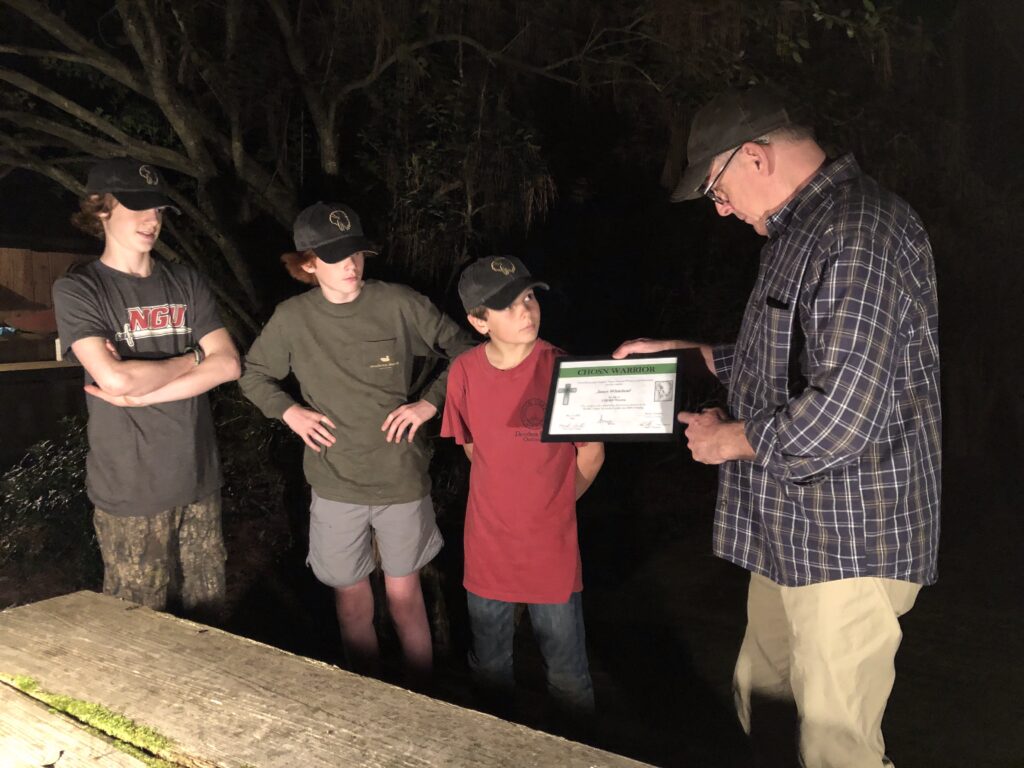
By Mark Getty “Thunder Quill,” CEO. CHOSN Warriors, Inc.
